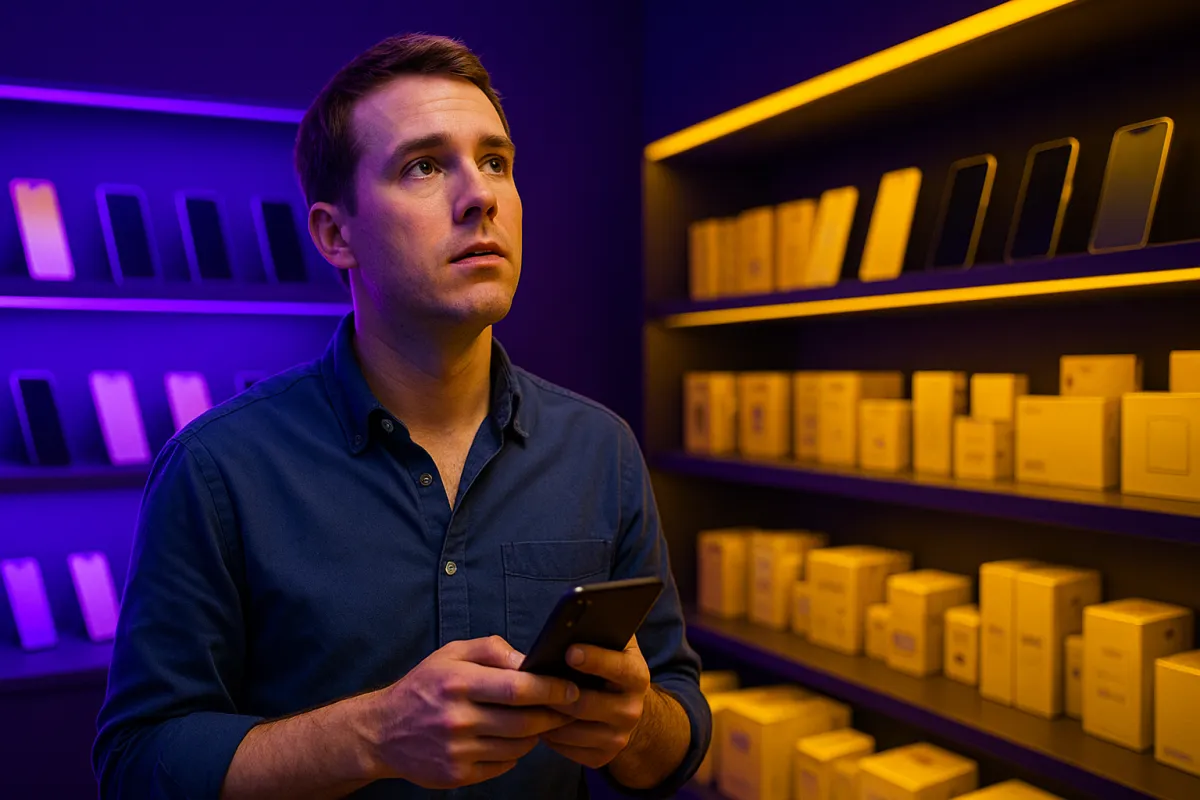By German Tirado, August 12, 2025
Introduction

In marketing circles, one of the most popular mantras is: “We must build deep emotional connections with our customers to grow.” It’s an idea repeated in conference talks, brand strategy decks, and agency pitches — often framed as the ultimate goal of modern marketing. Yet, decades of scientific evidence show that deep emotional connection is not required for purchase.
Extensive research from the Ehrenberg-Bass Institute for Marketing Science, spanning fast-moving consumer goods, high-consideration purchases, and complex B2B marketing environments, reveals that brands grow by reaching more category buyers and making themselves mentally available (easy to recall in a buying situation) and physically available (easy to find and buy) [18][19]. While emotional tone in advertising can help capture attention, it is not the key driver of sales growth — availability is.
In both consumer and business contexts — from companies shopping for internet marketing services to busy entrepreneurs seeking telephone answering services — most purchases are driven by mental shortcuts, memory structures, and brand accessibility rather than personal emotional intimacy. Customers don’t need to “love” a brand to buy it; they simply need to be aware of it and see it as a suitable choice in their moment of need.
Scientific laws like Double Jeopardy show that big brands are not big because customers feel more affection toward them. Instead, they are big because they have higher penetration, more Category Entry Point (CEP) coverage, and therefore are thought of in more buying situations [18]. These brands naturally enjoy slightly higher loyalty, not due to deeper emotional bonds, but as a statistical result of serving a larger customer base.
This is a fundamental shift in thinking for marketers still chasing brand “love” as a growth strategy. The real competitive advantage comes from broad-reach marketing, consistent mental availability building, and removing friction in purchase channels — not from lengthy emotional courtship.
Table of Contents
Introduction – Why Emotional Connection Is Overrated in Marketing
Why Emotional Connection Is Overrated
How Buyers Really Choose Brands
The Real Drivers of Brand Growth
Why the Emotional Myth Survives
How to Grow Without Chasing Emotional Depth
Case for Internet Marketing Services & Telephone Answering Services
Conclusion – Building Brands Without Emotional Dependency
Frequently Asked Questions (FAQs)
Works Cited
1. Why Emotional Connection Is Overrated

Low-Attention Buying Is the Norm
For most categories, buying is habitual and low-attention. Even in high-value B2B transactions, decision-makers rely on memory shortcuts. Buyers first recall brands linked to relevant Category Entry Points (CEPs), the cues that trigger category needs, such as “need to cut operational costs” or “want faster delivery to clients” [19].
This means the battle for market share isn’t about cultivating deep emotional intimacy. It’s about being present in memory when those triggers occur.
Double Jeopardy: Big Brands Don’t Have More Love, They Have More Buyers
The Double Jeopardy Law shows that larger brands have more buyers and slightly higher loyalty, not because customers are emotionally bonded, but because they have greater market penetration [18]. Smaller brands don’t suffer from lack of love; they suffer from lack of reach and limited mental availability.
Why Practical Barriers Outweigh Bold Messaging

When marketers ask rejectors “Why would you refuse Brand X?”, the top reasons are always rooted in practical frictions, not ideological objections:
Company Characteristics: Perceptions of size (“too small”), origin (“not local enough”), or history (“recent scandal”)
Service/Gaps: Limited distribution, lack of local branches, outdated technology
Trust & Ethics: Concerns over data privacy, corporate governance, or past compliance issues
Price Issues: Perceived unfair pricing, hidden fees, or lack of tiered options
Product/Service Fit: Misalignment with buyer needs or technical requirements
Across all studied categories, “controversial marketing stance” never emerges as a cited reason—practical hurdles consistently dominate [1].
2. How Buyers Really Choose Brands

Memory, Not Romance
When a buying situation arises, buyers pull from a mental shortlist. These brands are retrieved from memory based on past exposure and brand-CEP associations [19]. Even if buyers later do research, they heavily favor brands they already know.
A procurement officer choosing a payroll service provider may appear “loyal” to their current vendor, but the real reason is that the brand is entrenched in memory and fits multiple CEPs like “can handle compliance changes quickly” or “integrates with existing systems.”
CEPs Over Emotional Depth
CEPs are the real competitive advantage. In US business insurance, each additional CEP linked to a brand reduces the likelihood of a customer defecting by around 5% [19]. This protective effect happens without the need for personal emotional connection.
3. The Real Drivers of Brand Growth

Mental Availability
Mental availability is your brand’s presence in a customer’s mind across a range of buying situations. Bigger brands have wider, fresher CEP networks, meaning they are linked to more buying triggers and are recalled more easily.
Example:
A telecommunications company might be mentally available for “need reliable service when traveling abroad,” “switching after price increase,” and “launching a new office location.” Each link makes the brand more competitive without emotional intimacy.
Physical Availability
Physical availability ensures that once your brand is thought of, it can be purchased easily. This includes:
Being present in all major distribution channels.
Offering formats, pack sizes, and price points to fit various buying contexts.
Reducing friction in purchase processes.
4. Why the Emotional Myth Survives

Anecdotal Bias – Customers who do feel emotionally attached are memorable, but they are a small minority.
Misreading Causality – Positive feelings are often a result of repeated use, not the cause of initial purchase.
Over-Attribution in Storytelling – Marketers like emotionally satisfying explanations for growth, even when the data points elsewhere.
Confusion About Advertising’s Role – While emotional tone can help with memorability, its purpose is to refresh brand–CEP links, not to deepen “love.”
5. How to Grow Without Chasing Emotional Depth

Step 1 – Map Category Entry Points (CEPs)
Identify the cues that bring your category to mind. Use the “Revised W’s” framework:
When – e.g., “when system crashes”
Where – e.g., “remote teams across states”
While – e.g., “while expanding into new markets”
With/Instead-of-What – e.g., “instead of outsourcing”
With/For Whom – e.g., “for compliance officers”
How Feeling – e.g., “feeling frustrated by delays”
Why – e.g., “to improve client retention” [19]
Step 2 – Link Your Brand to CEPs
Each campaign should focus on co-presenting your brand with one CEP clearly and memorably. Rotate through different CEPs over time to build a wide network.
Step 3 – Maximize Reach
Reach both in-market (physical availability) and out-of-market buyers (mental availability). According to the 95–5 Rule, up to 95% of category buyers are not in-market at any given time [15]. These buyers will remember you later if you advertise consistently.
Step 4 – Remove Purchase Barriers
Ensure your brand can be purchased easily in every likely buying context, online, offline, via partners, direct purchase, or subscription.
Step 5 – Measure and Refresh
Track mental availability by measuring how many CEPs buyers link to your brand and how often they think of your brand for each CEP. Refresh links regularly to prevent memory decay.
6. Case for Internet Marketing Services & Telephone Answering Services

For categories like internet marketing services and telephone answering services, emotional connection plays a minimal role. What matters is:
Being the first provider recalled when a business needs more leads or misses a call during peak hours.
Having strong CEP links like “when launching a new product,” “when losing leads after hours,” or “when ad campaigns need better ROI.”
Being physically available through easy onboarding, flexible plans, and transparent pricing.
Conclusion
The idea that deep emotional connection is required for purchase is one of marketing’s most persistent myths — but the evidence is overwhelmingly clear: brands grow by being mentally and physically available, not by cultivating intimate personal bonds with every customer. Emotional tone in advertising can help attract attention and aid memory encoding, but emotional depth is not the growth engine.
From high-frequency consumer categories to complex B2B marketing purchases, the same patterns emerge. Whether a business owner is selecting internet marketing services to boost lead generation, or a growing company is investing in telephone answering services to improve customer response times, their decision is guided by Category Entry Points (CEPs), the cues and contexts that bring a brand to mind, and the ease of purchase in that moment.
Big brands dominate not because they are universally adored, but because they have broader reach, more CEP associations, and greater accessibility across buying situations [18][19]. This aligns with the Double Jeopardy Law, which shows that larger brands have more buyers and slightly higher loyalty purely as a function of scale and penetration, not deeper affection.
For marketers, this means the path to sustainable growth is clear:
Invest in Broad Reach – Ensure your brand message reaches as many category buyers as possible, both in-market and out-of-market, to plant and refresh memory structures.
Build CEP Coverage – Link your brand to a wide range of buying cues using consistent brand assets so you’re recalled in more situations.
Maximize Physical Availability – Remove friction from the purchase process by being present in all relevant channels, formats, and price points.
Measure Mental Availability – Track how often your brand is thought of across different buying situations, and monitor whether you are increasing your mental market share.
In short, the most powerful growth strategy for any brand, whether selling software, coffee, or business support services like telephone answering or digital marketing, is to make it easy to think of and easy to buy.
Chasing emotional “love” as the centerpiece of your marketing strategy risks distracting from the fundamentals that actually work. The science-backed approach is to focus your creative, media, and sales efforts on expanding your mental availability, maintaining physical availability, and reaching more buyers more often. Brands that do this win the battle for memory and market share, with or without deep emotional connection.
Frequently Asked Questions (FAQs)
Q1: If deep emotional connection isn’t required for purchase, what should brands focus on instead?
A: Brands should focus on increasing mental availability (being easily recalled in a buying situation) and physical availability (being easy to access and purchase). Building strong Category Entry Point (CEP) links and ensuring wide market reach are proven drivers of brand growth [19].
Q2: Does this apply to both B2B and B2C marketing?
A: Yes. Whether selling consumer goods or B2B services like internet marketing services or telephone answering services, the same laws of marketing apply. Buyers in both contexts rely on memory structures and accessibility, not emotional depth, when making purchase decisions [18][19].
Q3: Are emotions in advertising still useful?
A: Absolutely — emotional tone can help capture attention and improve memory encoding. However, the goal should be to link your brand to relevant buying cues (CEPs), not to foster personal emotional intimacy with every customer.
Q4: How does the Double Jeopardy Law fit into this?
A: The Double Jeopardy Law shows that large brands have more buyers and slightly higher loyalty because they have broader reach and stronger CEP coverage. This loyalty is a statistical result of scale, not proof of deeper emotional bonds [18].
Q5: How do I measure mental availability for my brand?
A: Mental availability can be measured by surveying how often your brand is recalled for different buying situations or Category Entry Points. For example, a telephone answering service could track how often it’s mentioned in contexts like “missed calls after hours” or “managing high call volumes.”
Q6: Is building mental availability a short-term tactic?
A: No. Building and refreshing CEP links is a long-term process that requires consistent, broad-reach marketing over years. This is how you ensure your brand stays competitive and top-of-mind when buyers enter the market [19].
Q7: What’s the risk of focusing too much on emotional connection?
A: Overemphasizing emotional connection can distract from the proven growth levers of reach, mental availability, and physical availability. While emotional advertising can be engaging, it should serve the purpose of making your brand easier to recall and buy — not as an end in itself.
Works cited
[15] Dawes, J. (2021). Advertising Effectiveness and the 95-5 Rule: Most B2B Buyers Are Not in the Market Right Now. Ehrenberg-Bass Institute for Marketing Science.
[18] Romaniuk, J., Dawes, J., & Faghidno, S. (2021). The Double Jeopardy Law in B2B Shows the Way to Grow. Ehrenberg-Bass Institute for Marketing Science.
[19] Romaniuk, J. (2022). Category Entry Points in a Business-to-Business (B2B) World. Ehrenberg-Bass Institute for Marketing Science.
Address
Phone: 725-240-6870
Email : [email protected]
Address : 6440 Sky Pointe Dr. #140-341 Las Vegas, NV 89131
Artificial Intelligence
Marketing & Branding
Marketing & Branding
©2025 Max Digital Edge | All Rights Reserved
